Broiler Feed Formulas and Ingredients for Rapid Growth
Choosing the right feed and mixing it precisely is vital for broiler growth and meat quality. Quality ingredients matched to each growth stage can speed up weight gain and improve health. This guide shares broiler feed formulas and ingredient alternatives to help reduce costs and improve farming efficiency.
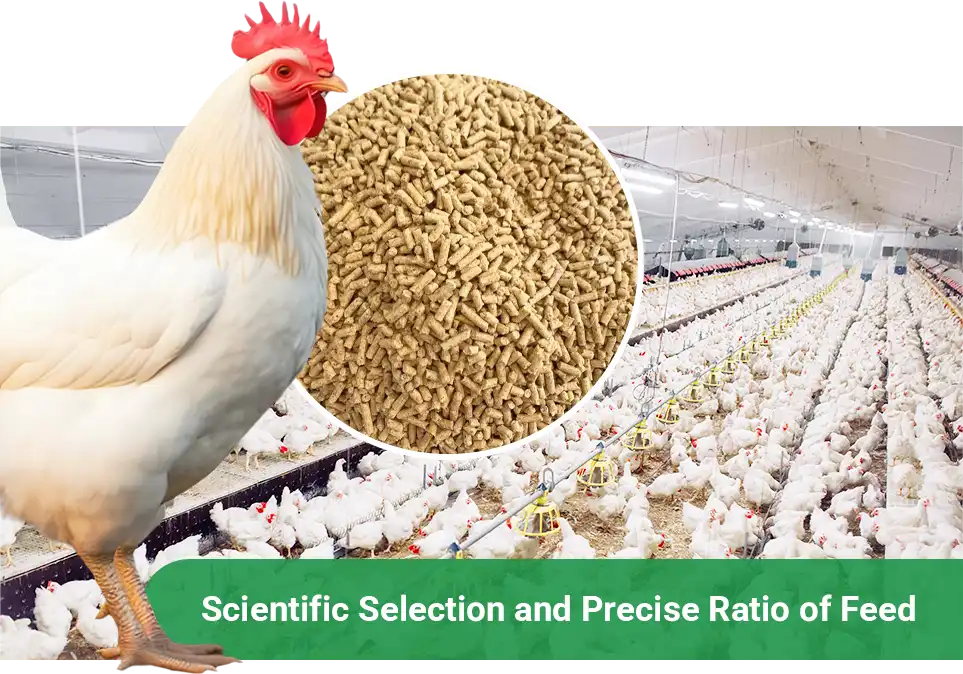
Broiler Feed Ingredients
Broilers grow quickly, reaching market weight in 35–45 days, requiring nutrient-rich, digestible feed. Each stage needs a balance of energy, protein, amino acids, minerals, and vitamins for fast growth.
A quick reference table at the end lists key ingredients for each nutrient.
1.Energy
Broilers have a short growth cycle and fast metabolism, requiring a steady energy supply to support muscle growth, weight gain, and immune function. However, too much energy can lead to fat deposition and metabolic strain.
Common sources include corn, wheat, and sorghum. A small amount of animal or vegetable oil can boost energy density and improve feed quality, but oxidation must be avoided.
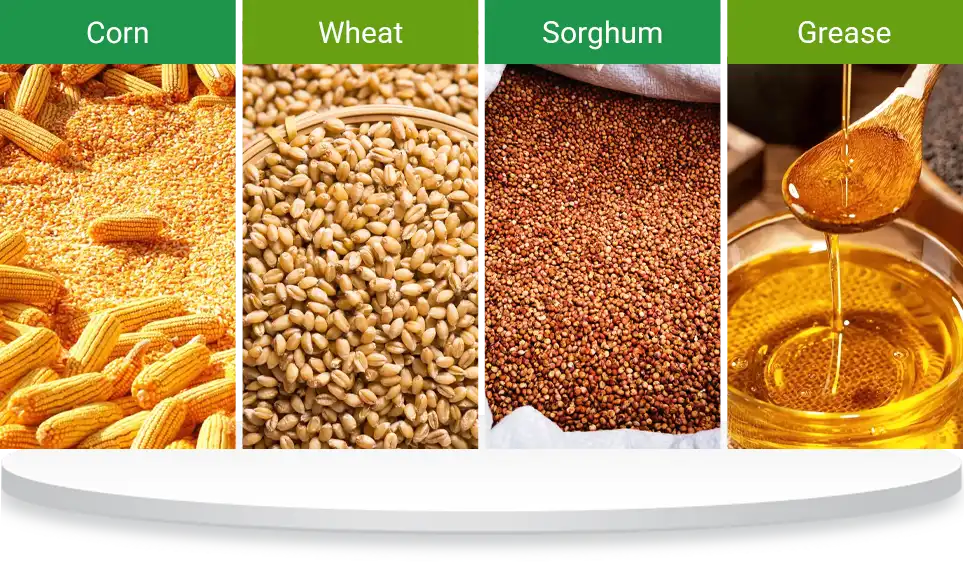
2.Protein & Digestible Amino Acids
Broilers grow mainly breast and leg meat, depending on protein and balanced amino acids. They're especially sensitive to lysine (for breast muscle) and methionine (for feathers and immunity). A deficiency can directly lower breast meat yield.
Protein levels in feed should match the growth stage. Too much protein increases cost and nitrogen emissions. Broiler chicks need higher protein (21–22%), which can be reduced later while balancing amino acids.

3.Minerals
Fast weight gain in broilers requires strong bones to prevent lameness and deformities. Minerals support not only bone growth but also metabolism, immunity, and nerve function.
Feed should keep calcium and phosphorus in balance and supply enough trace minerals like zinc, copper, manganese, and sodium, adjusting for age, climate, and stress.
Limestone, oyster shell, dicalcium phosphate, salt, sodium bicarbonate, potassium chloride, and trace mineral mixes are common sources.
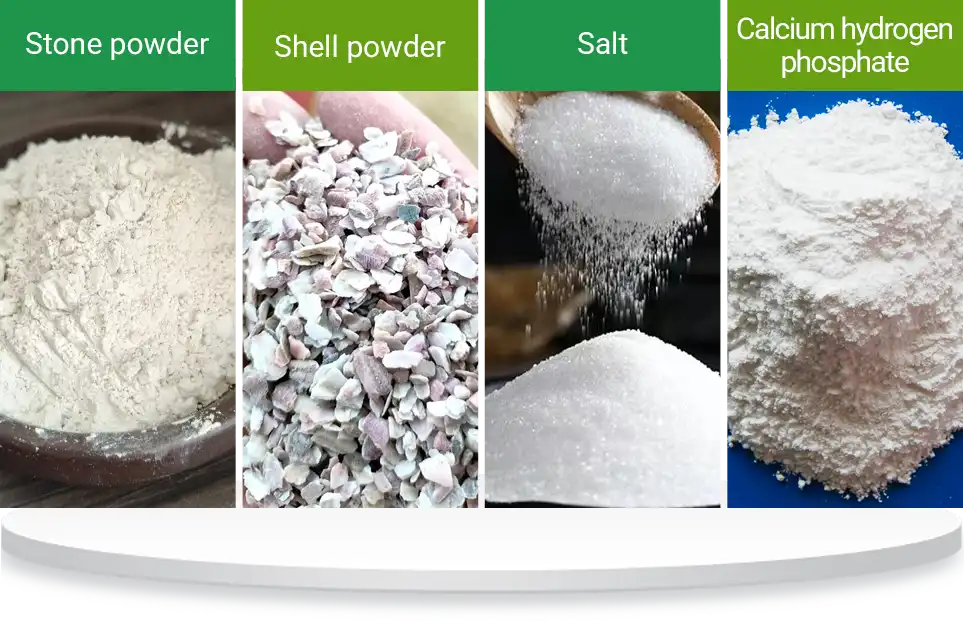
4.Vitamins
Intensive farming and rapid growth can stress broilers, weakening their immune system. Vitamins E and C help boost immunity and reduce oxidative stress, while vitamin A supports respiratory and gut health, lowering the risk of disease in crowded conditions.
Common sources like carrot powder, cod liver oil, leafy greens (alfalfa, spinach), yeast, flaxseed, malt powder, and vegetable oils are rich in vitamins and easy to source.
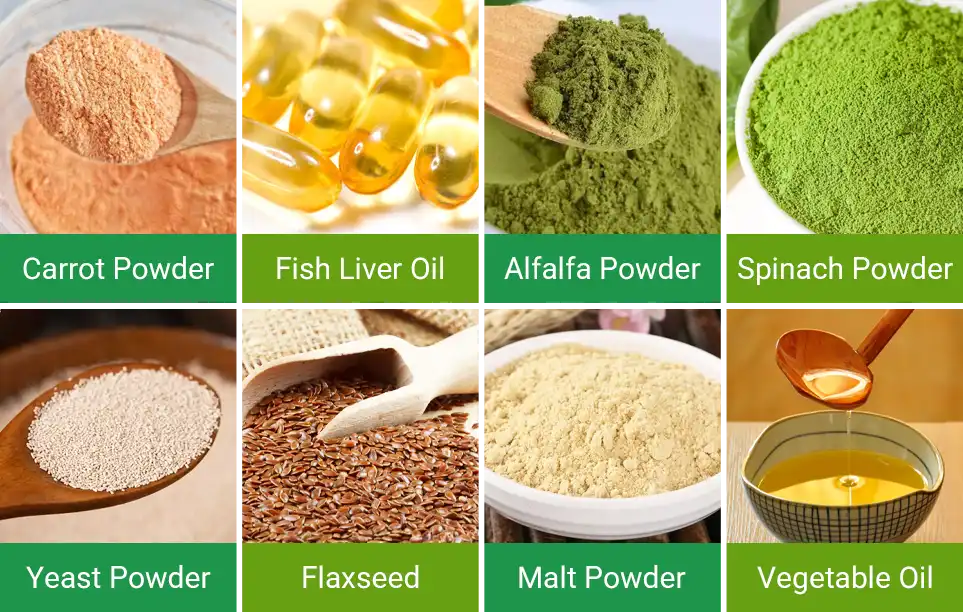
5.Functional Additives
Adding functional additives to broiler feed doesn't directly provide nutrients but helps improve nutrient absorption, gut health, and stress management, indirectly boosting growth and health.
Common additives include enzymes, probiotics (lactic acid bacteria, yeast), prebiotics (inulin, oligosaccharides), antioxidants, and organic acids.
|
Nutrients |
Common Ingredients |
|
Energy |
Corn, wheat, sorghum, animal oil, vegetable oil |
|
Protein & Amino Acids |
Soybean meal, fish meal, rapeseed meal, DDGS, synthetic amino acids (lysine, methionine) |
|
Minerals |
Limestone, shell powder, dicalcium phosphate, monocalcium phosphate, salt, sodium bicarbonate, potassium chloride, trace minerals (zinc, copper, manganese, sodium) |
|
Vitamins |
Carrot powder, fish liver oil, leafy greens (alfalfa meal, spinach powder), yeast powder, flaxseed, malt powder, vegetable oil |
|
Functional Additives |
Enzymes, probiotics (lactic acid bacteria, yeast), prebiotics (inulin, oligosaccharides), antioxidants, organic acids (lactic, acetic, citric) |
Broiler Feed Formula
Broilers' nutritional needs change with each growth stage. Precise feed formulation not only meets their growth requirements but also reduces nutrient waste and lowers feed costs.
Starter Feed (0-10 Days)
To support rapid bone and immune development, feed should be rich in protein and minerals.
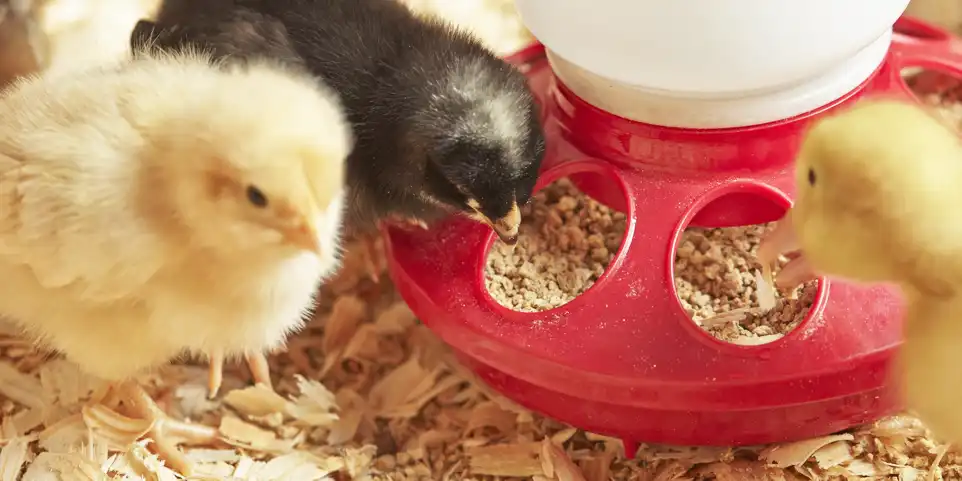
Formula 1
Corn 55-56%, Soybean meal 35-38%, Fishmeal 5-10%, Dicalcium phosphate 1.0-1.5%, Limestone 1.0-1.2%, Salt 0.3-0.4%, Synthetic amino acids 0.1-0.2%, Vegetable oil 2-3%, Yeast powder 0.5-1.0%.
Formula 2
Corn 55-56%, Soybean meal 34-35%, Canola meal 3-5%, Fishmeal 4-7%, Dicalcium phosphate 1.0-1.2%, Limestone 1.0-1.2%, Additives 1%, Vegetable oil 2-3%, Carrot powder 0.5-1%.
Grower Feed (10-30 Days)
Protein levels are gradually adjusted, and energy density is increased to promote rapid muscle growth.
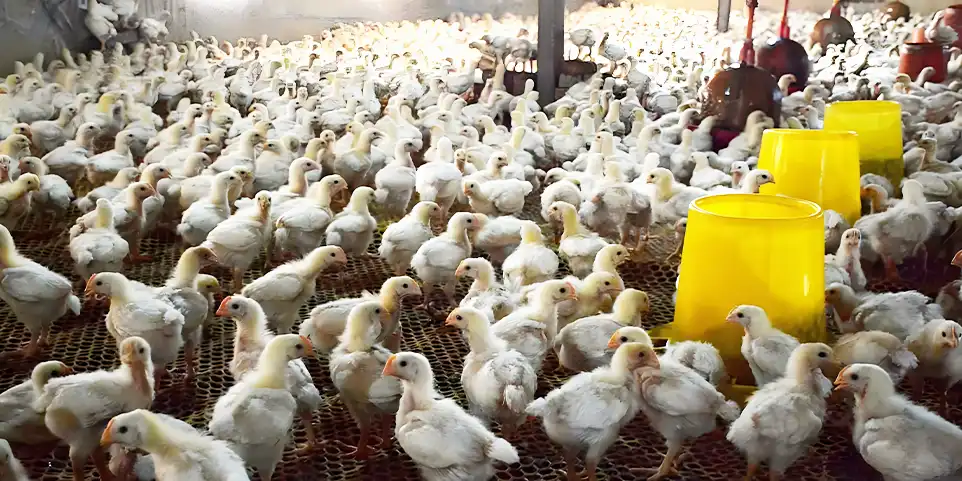
Formula 1
Corn 57-58%, Soybean meal 10-12%, Fishmeal 3-5%, DDGS 4-6%, Dicalcium phosphate 1.0-1.2%, Limestone 1.0-1.2%, Salt 0.3-0.4%, Synthetic amino acids 0.1-0.3%, Vegetable oil 2-3%.
Formula 2
Corn 58-60%, Soybean meal 10-12%, Canola meal 5-7%, Fishmeal 3-4%, Dicalcium phosphate 1.0-1.2%, Limestone 1.0-1.2%, Vegetable oil 2-3%, Yeast powder 0.5-1%.
Finisher Feed (30 Days to Market)
Reduce protein and increase energy density to help broilers reach their ideal weight while controlling fat accumulation.
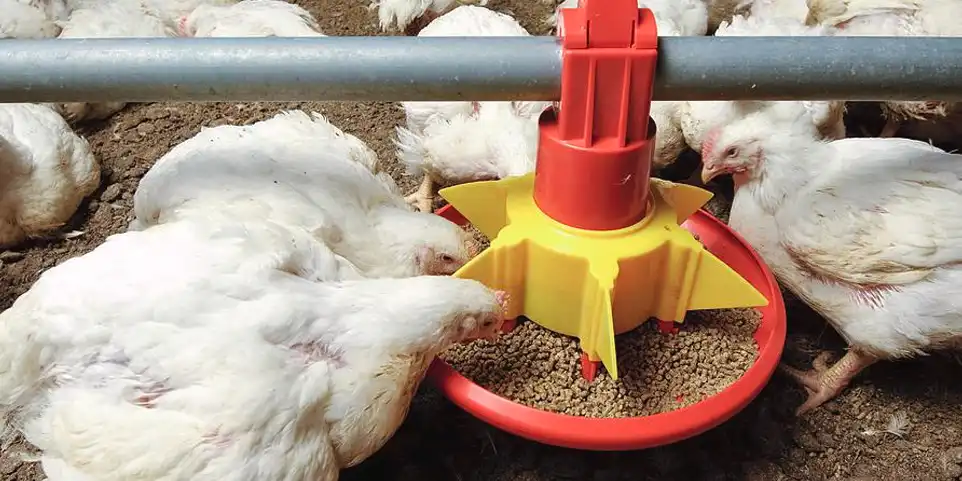
Formula 1
Corn 59-61%, Soybean meal 10-12%, DDGS 5-8%, Fishmeal 2-4%, Dicalcium phosphate 1.0-1.5%, Limestone 1.0-1.2%, Salt 0.3-0.4%, Synthetic amino acids 0.1-0.2%, Vegetable oil 3-4%.
Formula 2
Corn 63-65%, Soybean meal 8-10%, DDGS 4-6%, Fishmeal 3-5%, Dicalcium phosphate 1.0-1.3%, Limestone 1.0-1.2%, Additives 1%, Vegetable oil 3-4%.
Ingredient Substitutes
Adjust feed ingredients and ratios based on local supply, cost, and demand. Replacing high-cost ingredients can help lower feed costs. Here we share some common substitutes for expensive ingredients.
- Soybean meal → DDGS, Canola meal, Cottonseed meal, Wheat bran
- Fishmeal → Fish by-products (such as fish liver or bone powder), Blood meal
- Dicalcium phosphate → Oyster shell, Monocalcium phosphate
- Vegetable oil → Animal fats (lard, tallow), Palm oil, Canola oil
Adjusting Formulas for Special Cases
Static formulas can't always meet farming challenges. During stress like heat, group changes, or vaccinations, adjusting the formula helps ensure healthy growth and reduce losses.
Slow Growth / High FCR
This is usually caused by an imbalance of energy and protein, amino acid deficiencies, or low digestibility.
To address this, increase digestible ingredients like corn and oils, use fishmeal and high-quality soybean meal, and supplement with lysine, methionine, and phytase or xylanase to improve feed efficiency.
Poor Feather Development / Diarrhea
This is often related to moldy ingredients, high proportions of indigestible materials, or deficiencies in sulfur amino acids and trace elements.
Use mold inhibitors and toxin binders, reduce high-fiber ingredients, and supplement with methionine, cysteine, zinc, and manganese to improve digestion.
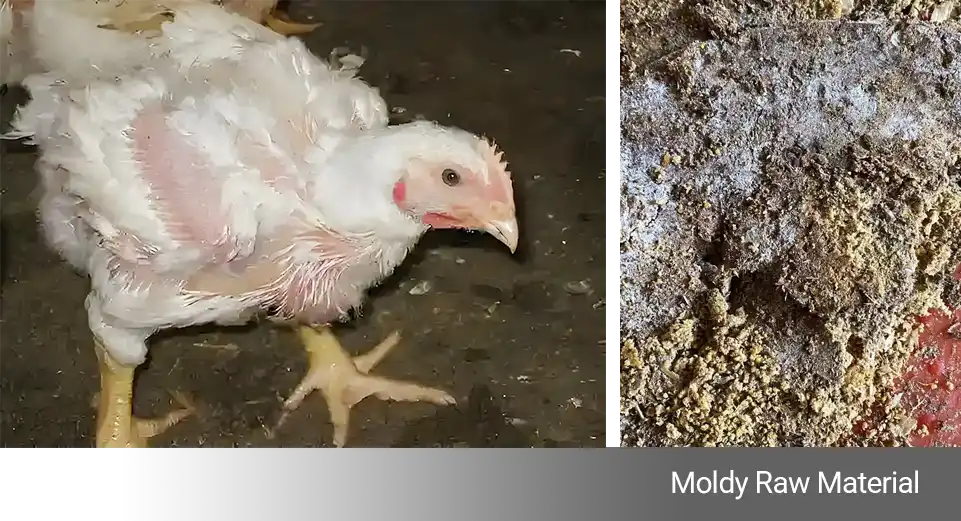
Stress and Immunity
In times of stress from heat, group changes, beak trimming, or vaccinations, feeding may decrease, leading to issues like diarrhea.
Add sodium bicarbonate and salt for electrolytes, and boost vitamin C, E, and A to improve stress resistance. Probiotics or prebiotics can help stabilize gut flora, and reducing crude protein slightly can help lower metabolic heat.
Types of Poultry Feeds
Broiler feed typically comes as mash, wet mash, or pellets (crumbles for chicks).
Powder feed can be wasteful, especially in humid conditions when it absorbs moisture, clumps, and reduces feeding efficiency. Its dust may also affect the birds' respiratory health.
Wet mash is more palatable and supports digestion, but it spoils easily, so it must be fed fresh and handled carefully, with higher preparation and storage costs.
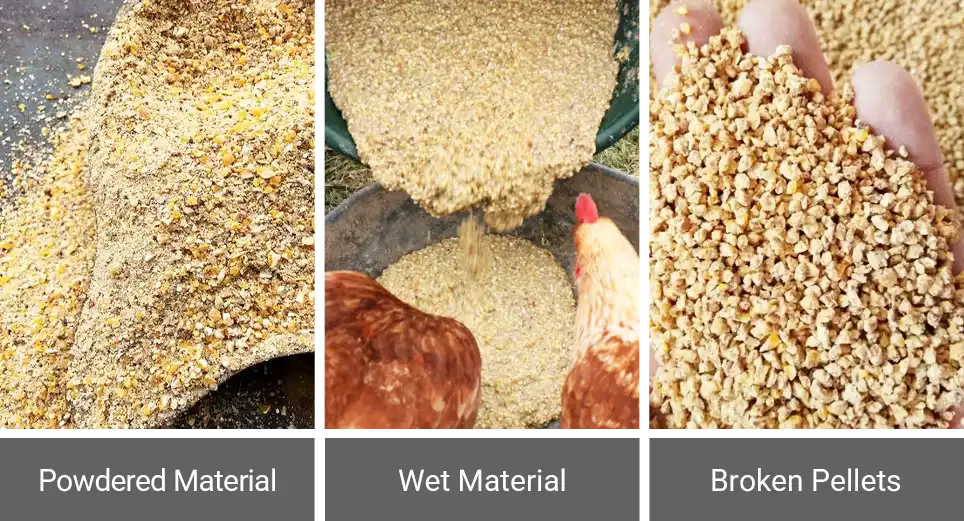
Pellet feed, made by compressing raw materials into solid pellets with a pellet machine, is suitable for all broiler growth stages. It is more convenient for transportation, storage, and feeding.
Research by Gous and Morris (2005) shows that pelleted feed has clear benefits over mash, reducing heat production and minimizing heat stress. Frikha et al. (2009) also found that pelleted feed improves feed conversion rate (FCR), meaning less feed is needed for weight gain, enhancing feed efficiency.
Therefore, using pelleted feed is an effective strategy in broiler farming.
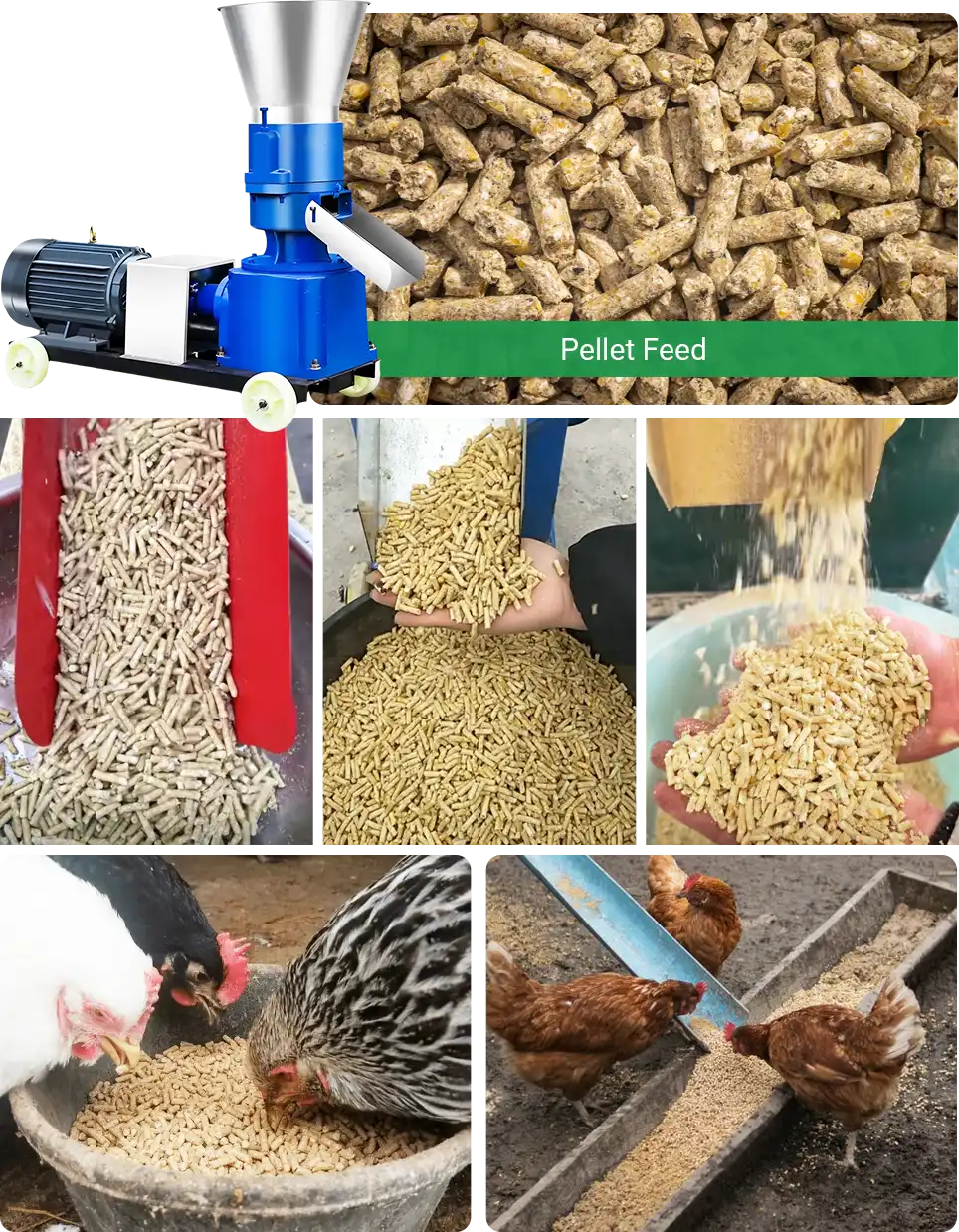
Looking to make your own broiler feed? An efficient pellet machine can boost feed quality and production efficiency. Whether you're a small farm or a large operation, we have the right solution for you. Contact us today to learn more.

 Online Contact
Online Contact Send Message
Send Message
Need Some Help?
Contact us quickly and we will reply you within 24 hours. We will not disclose your information.